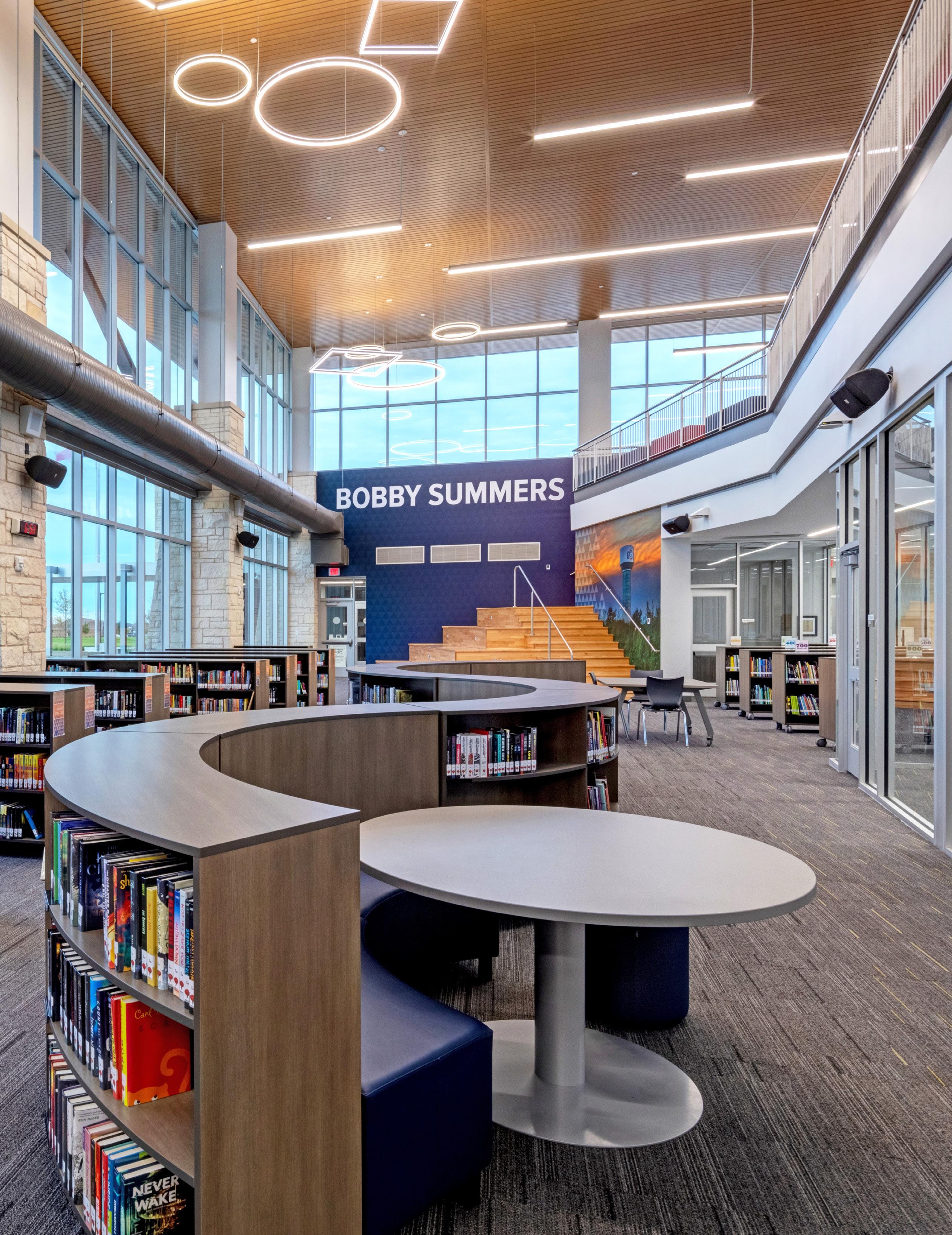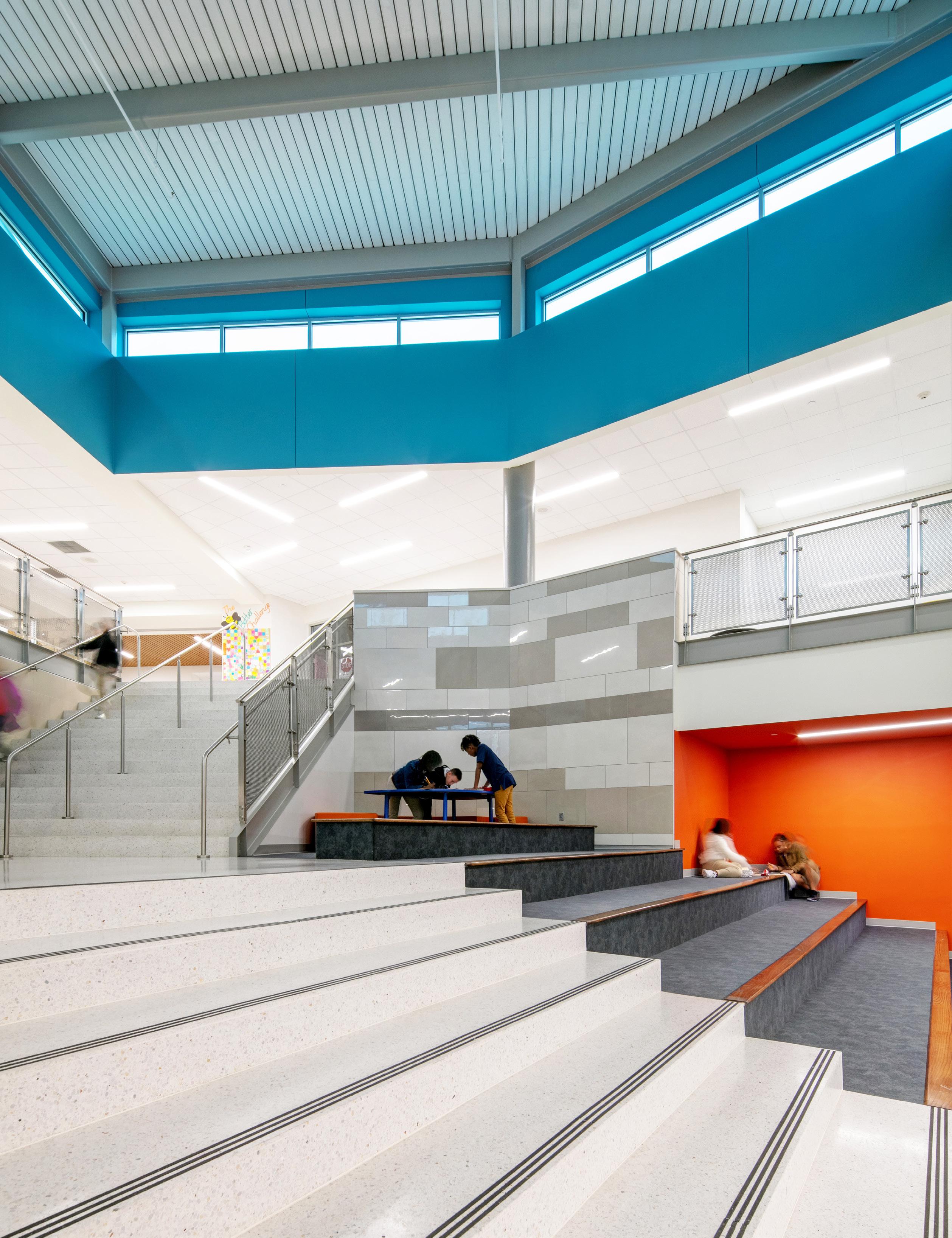
4 minute read
Design Solutions & Strategic Resources for Educational Environments in a PostCOVID-19 World
DESIGN SOLUTIONS AND
STRATEGIC RESOURCES FOR EDUCATIONAL ENVIRONMENTS
Ken Hutchens, Chief Creative Officer; Dalane Bouillion, Ed.D., Principal of Educational Planning; Clinton Schiver, Principal; Jim Stephenson, Principal of Automotive; Michael Antenora, Principal of Commercial
COVID-19 has illustrated how quickly diseases can spread through our communities with the highest and most concentrated population centers taking the brunt of the impact. But this also can be studied on the micro level with how quickly diseases can spread throughout our school systems and facilities. It is not unusual during the year to hear of districts shutting a school down for a long weekend to break a disease spreading through part of its community. During this “break” the districts sanitize the facility, cleaning all surfaces. It is time to consider a different strategy for selecting and specifying materials, systems, and design strategies in educational environments that mitigate opportunities for the spread of disease. Advances in technology continue to increase data-driven automation creating more efficient, and safer school environments incorporating technology to reduce frequently touched surfaces and maintain overall building health. We believe here are several materials and automated devices that are part of the current supply chain available to districts to potentially change the future of community-spread diseases that should be investigated. Through this process, positive impacts can be made.
DESIGN STRATEGIES
Design Strategies should be focused on the four impact areas of Health, Mental Health, Sustainability, and Convenience while employing the best practices that incorporate the community expectations and overarching goals of the district. Specifically, we believe improved practices should: • Reduce the size of learning environments and create smaller scale learning neighborhoods within a school
• Increase flexibility and adaptability of spaces such that each cohort learning environment has access to multiple space types • Reduce student per sf ratios for cafeterias, libraries, and gymnasiums, thereby lessening student density, or allow for dispersion of these amenities such that each learning neighborhood has a smaller version dedicated to their content and/or grade level. • Utilize software simulation programs to study student movement in hallway designs to diffuse student concentrations
• Employ software simulation programs to provide effective natural light within all environments
• Create appropriate outdoor learning environments including technology support for our environmental conditions
• Increase the number and visibility of hand washing stations • Reduce the number of unnecessary surfaces where dust and germs collect • Design surfaces to be easily cleaned and maintained
Materials and Systems are critical to improving the learning environment so that preventing spread of a disease is achieved. We are aware that students, parents, and staff will be required to touch some surfaces throughout the day, but minimizing the impact of touch is important. Additionally, improving the systems that filter our air is crucial. We believe design solutions should also: • Utilize impermeable surfaces, such as solid surface and high-pressure laminate systems, to meet the needs of disinfection and durability • Enhance indoor air quality through mechanical air filtration systems including Ultraviolet C (UVC) light to kill microorganisms and High Efficiency Particulate Air (HEPA) filtration to remove airborne particles • Make available UV sanitizer in classrooms to disinfect desks and other surfaces overnight • Embrace materials that:
• Have antimicrobial qualities inherently impeded • Do not require the use of toxins or VOCs to keep materials clean • Can be sufficiently cleaned with safe materials that do not hinder the air quality
MATERIALS & SYSTEMS
AUTOMATED DEVICES
Automated Devices would change the day-to-day practice of some daily habits, but would reduce the need to physically touch many surfaces. Consideration of a variety of devices would help us automate the built environment. Some of the best automated devices include:
• Sensor-activated faucets, towel dispensers, bottle filling stations and drinking fountains, urinals, and toilets. • Sensor-activated doors at building entrances, reception areas, and high traffic areas. • Use of mobile phones for touchless access and interface with elevators, doors, and timeclocks. • Networks of sensors that track temperature, humidity, movement, and density (adjustable as needed to maintain optimal conditions for health and safety) • Sensors that monitor facility equipment and alert maintenance departments when repairs are needed ensuring optimal conditions for health and safety
Drastic changes in our society with the COVID-19 pandemic necessitated the urgency for studying and deciding how to better design and equip clients with the most appropriate resources. Taking measures to ensure Wellness, Sustainability, and Convenience are good practice for improving the built environment. VLK Architects is committed to additional study and continuous improvement as devices, finishes, and systems continue to be developed. Selecting the best resources and creating the best environments for our communities is paramount for all of us as we continue down this path of uncertainty.





